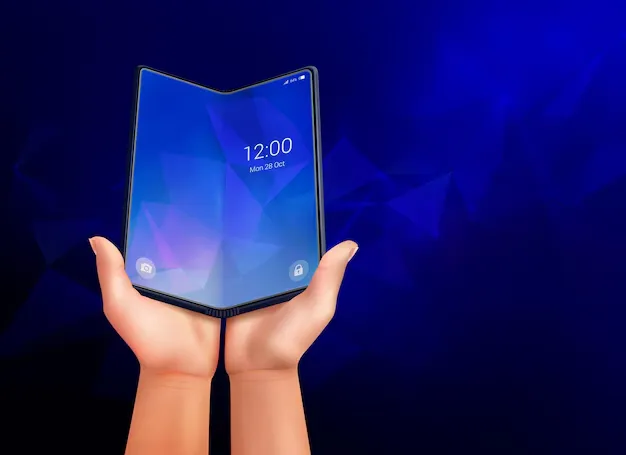OLED Display Technology has transformed the way we experience smartphone screens. With sharper visuals, richer colors, and energy-efficient designs, it has become a game-changer in the mobile industry. If you are looking for the best display experience, understanding OLED Display Technology is essential.
In this guide, we will break down everything you need to know about OLED screens. From their benefits to how they compare to traditional displays, this guide will help you make an informed choice.
1. What Is OLED Display Technology?
Understanding OLED Screens
OLED (Organic Light-Emitting Diode) Display Technology uses organic compounds that light up when an electric current passes through them. Unlike traditional LCD screens, OLED Display Technology does not require a backlight, allowing for thinner and more flexible screens.
How Does It Work?
Each pixel in an OLED Display Technology screen emits its own light. This means deeper blacks, higher contrast, and better color accuracy. Smartphones using this technology provide an immersive viewing experience.
2. Advantages of OLED Display Technology
Superior Image Quality
With OLED Display Technology, you get richer colors, sharper details, and true blacks, making it ideal for gaming and video streaming.
Energy Efficiency
Since OLED screens light up individual pixels, they consume less power when displaying darker images. This helps extend battery life significantly.
Thinner and Lighter Screens
OLED panels are thinner than traditional LCDs, allowing manufacturers to design sleeker smartphones with edge-to-edge displays.
3. OLED vs. LCD: Which Is Better?
| Feature | OLED Display Technology | LCD Display |
|---|---|---|
| Black Levels | True Blacks | Washed-out blacks |
| Power Efficiency | More efficient on dark screens | Always on backlight |
| Viewing Angles | Excellent | Limited |
| Thickness | Ultra-thin | Thicker |
From the table above, it’s clear that OLED Display Technology offers a superior viewing experience compared to LCDs.
4. Different Types of OLED Displays
AMOLED (Active-Matrix Organic LED)
AMOLED displays are widely used in smartphones due to their vibrant colors and faster response times.
Super AMOLED
An advanced version of AMOLED, Super AMOLED offers better brightness and energy efficiency.
Foldable OLED Screens
These are the latest innovations in OLED Display Technology, allowing flexible and foldable smartphone designs.
5. Why OLED Display Technology Matters for Smartphones
Enhanced Visual Experience
Whether you are watching movies, playing games, or browsing photos, OLED Display Technology enhances every visual aspect.
Improved Battery Life
By turning off pixels for black areas, OLED screens help conserve battery, making them ideal for long-term use.
Sleek and Modern Designs
Most flagship smartphones now use OLED Display Technology to create slim, futuristic designs.
6. Common Issues and How to Fix Them
Even with its advantages, OLED screens can sometimes face issues. Here are some common problems and their solutions:
Screen Burn-In
-
Solution: Use dark mode and reduce screen brightness.
Color Shifting
-
Solution: Update your display settings to optimize colors.
Battery Drain in Bright Modes
-
Solution: Lower screen brightness and enable adaptive brightness settings.
7. Future of OLED Display Technology
Micro-OLED and Quantum Dot OLED (QD-OLED)
Emerging OLED Display Technology innovations will bring even better color accuracy and durability.
Increased Adoption in Mid-Range Phones
Previously limited to premium devices, OLED Display Technology is now being integrated into mid-range smartphones.
Integration with AI and AR
With augmented reality and AI-driven displays, OLED Display Technology is set to revolutionize mobile experiences.
8. Frequently Asked Questions (FAQs)
1. What is OLED Display Technology?
OLED stands for Organic Light-Emitting Diode. It provides superior image quality, true blacks, and better energy efficiency compared to LCD screens.
2. Is OLED better than LCD?
Yes, OLED Display Technology offers better contrast, deeper blacks, and improved power efficiency compared to LCDs.
3. Can OLED screens cause burn-in?
Yes, screen burn-in can occur if static images are displayed for long periods. However, modern OLED screens have features to reduce this risk.
4. Do OLED screens last longer than LCDs?
OLED screens have a shorter lifespan compared to LCDs, but advancements in technology are improving their durability.
5. Are OLED screens expensive?
Yes, they are generally more expensive than LCDs due to their advanced technology and superior image quality.
6. Does OLED improve gaming experience?
Absolutely! OLED Display Technology provides better contrast, deeper blacks, and smoother motion, making it ideal for gaming.
7. Do all flagship smartphones have OLED screens?
Most flagship models now use OLED Display Technology, but some budget-friendly options still feature LCDs.
8. How can I maintain my OLED screen?
Use dark mode, lower brightness, and avoid displaying static images for long periods to extend the life of your OLED screen.
With OLED Display Technology leading the future of smartphone displays, it is essential to understand its advantages, limitations, and upcoming innovations. Whether you’re upgrading your phone or simply exploring better display options, OLED is the way to go!








